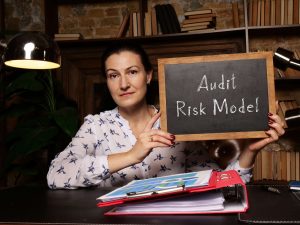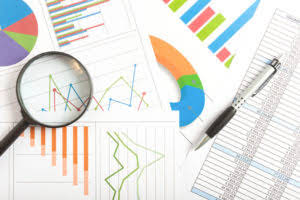
One of the earliest advances in financial accounting tools was in the 1880s, Accounting for Churches when American inventor William Burroughs invented the adding machine. This tool allowed accountants to calculate more accurately and efficiently than previous methods, such as tokens, clay balls, and abaci. To accommodate the need for true and fair reporting, the U.S. accounting industry adopted generally accepted accounting principles (GAAP).
Historical Development of Auditing
- Da Vinci illustrated Pacioli’s manuscript De Divina Proportione (“Of Divine Proportion”), and Pacioli taught da Vinci the mathematics of perspective and proportionality.
- With 71% of accountants working away from the office on a regular basis (Sage, 2012) developments in web-based software have made communicating and collaborating remotely all the easier.
- Corporations began to publish their financials in the form of balance sheets, income statements, and cash flow statements to attract investors.
- This extensive work served as a comprehensive summary of all mathematical knowledge known at the time.
- Paper money was much more portable than heavy metallic specie, and the Tang assured its universal usage under threat of penalties and possibly execution for using anything else.
- His principles of double-entry bookkeeping are the foundation of modern accounting practices, forming the basis for financial reporting and analysis in businesses of all sizes across the globe.
After Luca Pacioli wrote his book, he was invited to teach mathematics at the Court of Duke Lodovico Maria Sforza in Milan. Da Vinci illustrated Pacioli’s manuscript De Divina Proportione (“Of Divine Proportion”), and Pacioli taught da Vinci the mathematics of perspective and proportionality. Another key contemporary that Pacioli encountered during his lifetime was the renowned Italian painter and mathematician, Piero della Francesca. Born in Tuscany, della Francesca was an expert in perspective and geometry, which eventually influenced Pacioli’s later work. There are three steps in the accounting process those are Identification, Recording and Communicating. J.P. Morgan, a legendary banker and financier, was one of the most powerful bankers of his day.
- This period lasted until 1494, with the publication of the first book to describe double-entry accounting, a system using debit and credit entries.
- Thanks to the newly invented printing press, his book was mass produced and became a big hit.
- His contributions to accounting have helped businesses to track their finances, identify errors, and make informed business decisions.
- These celebrities not only add an intriguing dimension to the world of accounting but also exemplify how one’s career can take unexpected turns, ultimately leading to success in various fields.
- He established the modern version of forensic accounting when he helped convict Al Capone of tax evasion in the 1930s.
Modern professional accounting
- Beyond his work in accounting, Pacioli’s broader impact on the Renaissance era’s intellectual and artistic community is equally noteworthy.
- The chapter provided knowledge on the usage of journals and ledgers, as well as accounting for various elements such as assets, receivables, inventories, liabilities, capital, income, and expenses.
- Between 1472 and 1475, he became a Franciscan friar.5 Thus, he could be referred to as Fra (‘Friar’) Luca.
- He was a merchant, an economist, a scientist, and a diplomat from what was then the Republic of Ragusa.
- Pacioli met Da Vinci in Milan in 1496, where he was brought to teach a court—which included Da Vinci himself.
- Pacioli was an Italian mathematician and Franciscan friar who lived from 1447 to 1517.
- It was also the first textbook on algebra that was written in the vernacular language of northern Italy.
In summary, Luca Pacioli’s contributions to accounting and bookkeeping have had a lasting impact on the fields of business and economics. By providing a foundation for accurate financial management and ethical considerations, what is accountancy he has helped shape the modern finance and cost accounting practices that are crucial to today’s global economy. During the Italian Renaissance, Italian merchants began to involve themselves in trade with other cities, first trading across the Mediterranean Sea and then in other parts of the world. The increasing complexity of these trade relationships required better record keeping, and the system of double-entry bookkeeping emerged.
The first record of double-entry accounting

In 1854 the institute adopted ‘chartered accountant’ for its members, a term and demarcation that still carries legal weight globally today. The petition also highlighted the diverse skills required to be a professional accountant. In addition to mathematical proficiency, accountants needed a good understanding of general legal principles, as they often provided financial evidence in court. In television shows, accounting is a stereotypical “boring” career, often playing the punchline.
- Keep reading as we dive into the origin story of Pacioli’s system, and how his practices are still used by bookkeepers and accountants here in the twenty-first century.
- Such methods were carried over to the United States, and large firms such as General Motors adopted these accounting methods as well.
- From 1951 to the present day, accounting has been in its modern period, with accounting methods continuing their shift to meet uniform standards.
- One of the first readers was Leonardo da Vinci, who at the time was painting The Last Supper.
- The development of financial reporting, or the preparation of financial statements, is a critical aspect of accounting.
William Seward Burroughs’ adding machine was created in 1887 and perfected for commercial sale in the 1890s. It helped early accountants calculate receipts and quickly reconcile their books. Corporations began to publish their financials in the form of balance sheets, income statements, and cash flow statements to attract investors. Introduced in 1978, VisiCalc was the first spreadsheet software to allow financial modeling on the computer. That same year saw Peachtree Software launch an accounting software package for the personal computer. These developments, along with the 1998 introduction of QuickBooks for day-to-day bookkeeping, made financial accounting tasks easier to perform than relying on mainframe computers.


Some of the first accountants were employed around 300 BC in Iran, where tokens and bookkeeping scripts were discovered. Around the first millennium the Phoenicians invented an alphabetic system for bookkeeping, while the ancient Egyptians may have even assigned someone the role of comptroller. In addition to this, Pacioli wrote many books on accounting and invented a system of record keeping that used a memorandum, journal, and ledger. Accounting thus spread from intellectuals to the trading practices of merchants throughout the Middle Ages. Today, accountants follow standards of practice based on Pacioli and others to remain ethical when auditing their clients’ financial situations. Whole economies can rest on the expertise of accountants since many of the leading corporations employ one for everything from basic profit calculations to forecasting developments over decades.
Pacioli received an abbaco education, i.e., education in the vernacular rather than Latin and focused on the knowledge required of merchants. Pacioli’s book explained the Hindu-Arabic numerals, new developments in mathematics, and the system of double-entry was popular with the increasingly influential merchant class. In contrast to scholarly abstracts in Latin, Pacioli’s vernacular text contra asset account was accessible to the common man, and addressed the needs of businessmen and merchants.22 His book remained in print for nearly 400 years. In eighth century Persia, scholars were confronted with the Qur’an’s requirement that Muslims keep records of their indebtedness as a part of their obligation to account to God on all matters of their life. This became particularly difficult when it came to inheritance, which demanded detailed accounting for the estate after death of an individual.
